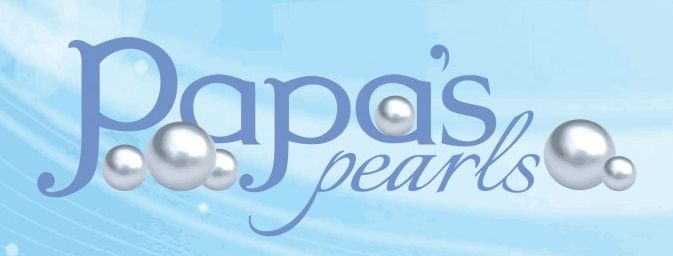 Liberty and Eden have been trying out Math Mammoth for the Old Schoolhouse Review Crew lately. We got to use three different worksheet sets, all from the Make it Real Learning series: Arithmetic I for grades 3-6, Arithmetic II for grades 4-7, and States by the Numbers – South Dakota for grades 3-7.
Liberty and Eden have been trying out Math Mammoth for the Old Schoolhouse Review Crew lately. We got to use three different worksheet sets, all from the Make it Real Learning series: Arithmetic I for grades 3-6, Arithmetic II for grades 4-7, and States by the Numbers – South Dakota for grades 3-7.
Not a complete curriculum by itself (although Math Mammoth has that too), these are extra worksheets for applying concepts and strengthening problem solving abilities. Using census data, store fliers, and the like, Math Mammoth has created real life problems. With product is a better price per ounce? Buy two small ones or one large? How many people live in South Dakota? (Answer: Not many!)
I chose South Dakota because it’s my home state. It was pretty fun to read about, and my girls enjoyed reading of their birthplace as well. After the first day of sitting with the girls and taking turns answering questions about place value and putting words to the numbers, I set them off by themselves. I loved the fact that I didn’t have to print these out. I’m cheap like that. The girls loved that they got to use the computer – that made it way more fun than handing them a stack of papers. Eden (age 8 and just having finished 3rd grade) especially enjoyed these worksheets – she actually asked to use them! From the girl who groans through math, these were amazingly right up her alley. When it came to applying what she already knows, she had a great time. I’m thinking we might need to change our approach to math for her.
 Math Mammoth teaches common core standards. If that is what I think it is, it’s what the uproar lately is about regarding public school curriculum that will, most likely, filter down into our homeschools if it’s not stopped. I have to admit, I cringed when I read “common core” on their website. Upon consideration, though, I wonder if something along these lines, if worse comes to worse, won’t be crucial to being able to pass the tests that it would seem are in the making. I don’t know. What I do know, though, is that I love the math in real life concept. We learn and learn and learn, but applying it – that’s when it becomes real to us. I’ve often said common sense isn’t common – it has to be taught. Using the things we learn in books to figure out things in life helps teach that, in my experience.
Math Mammoth teaches common core standards. If that is what I think it is, it’s what the uproar lately is about regarding public school curriculum that will, most likely, filter down into our homeschools if it’s not stopped. I have to admit, I cringed when I read “common core” on their website. Upon consideration, though, I wonder if something along these lines, if worse comes to worse, won’t be crucial to being able to pass the tests that it would seem are in the making. I don’t know. What I do know, though, is that I love the math in real life concept. We learn and learn and learn, but applying it – that’s when it becomes real to us. I’ve often said common sense isn’t common – it has to be taught. Using the things we learn in books to figure out things in life helps teach that, in my experience.
Reading bar graphs and sharing among friends, averages, fractions, and working with money – and the fact that owing money really means you have less than zero, and therefore a negative number – were all things studied in Arithmetic I. Arithmetic II covers unit cost, large numbers, possible numbers, (How many ways can you change the same digits and come up with different numbers?) budgets, foreign currency, and more.
Arithmetic I is available here for $4.99 as a PDF download. Arithmetic II is available here for $4.99 as a PDF download. Both have 46 pages with 10 activities. States by the Numbers are PDF downloads and are available for $2.99 per state of $19.99 for all 50 states here. Each of the States by the Numbers have 38 pages with 80 activities. All three of the files we used have the typewriting tool enabled to allow the student to work directly at the computer, or they can be printed out.
Read more reviews from the Old Schoolhouse Review Crew on this and other math helps from Math Mammoth at the Review Crew blog.


 Schoolhouse Review Crew. I received the DVD that contained the story of Jonah and three different lessons that had you drawing along with an instructor with step by step instructions. The story lasted 13 minutes, the “Obey!” art lesson using colored pencils was 18 minutes, “Released!” uses pastels and is 33 minutes, and Salvation is from the Lord is 29 minutes long and uses several different mediums. All four of my older children – ages 4, 5, 8, and 9 watched the video and drew along with the instructor for the first lesson, but just the older two for the second and third lessons. The recommended ages for this lesson is three and older for the story and six and up for the art lessons.
Schoolhouse Review Crew. I received the DVD that contained the story of Jonah and three different lessons that had you drawing along with an instructor with step by step instructions. The story lasted 13 minutes, the “Obey!” art lesson using colored pencils was 18 minutes, “Released!” uses pastels and is 33 minutes, and Salvation is from the Lord is 29 minutes long and uses several different mediums. All four of my older children – ages 4, 5, 8, and 9 watched the video and drew along with the instructor for the first lesson, but just the older two for the second and third lessons. The recommended ages for this lesson is three and older for the story and six and up for the art lessons.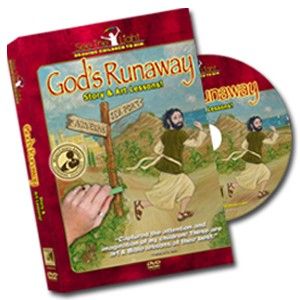 God’s Runaway features three art instructors. Heidi Shorts, Pat Kneply, and Jim Pence each present a lesson that all tie into the story of Jonah dramatized at the beginning of the DVD. From the website, bonus features also include:
God’s Runaway features three art instructors. Heidi Shorts, Pat Kneply, and Jim Pence each present a lesson that all tie into the story of Jonah dramatized at the beginning of the DVD. From the website, bonus features also include: 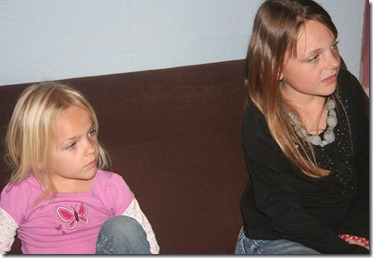






























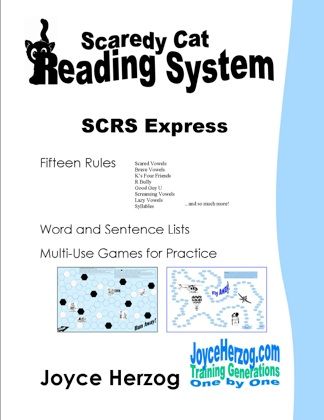 We spent anywhere from 30-60 minutes a day on this. It wasn’t the simplest curriculum, and it took some figuring to how it would work well for us, but we’ve had fun. The game board was by far Sterling’s favorite – we could spend an hour just playing on it. My older girls (Liberty is 9 and Eden is 8) would jump in for a rousing game, usually of “Spell…” and they’d try to spell the hardest words I could think of that were words they should know. I exhausted all the words in the book and most of my brain trying to keep them working. Sterling learned a lot and I learned exactly where he’s at in the world of phonics rules and their application. That was super fun.
We spent anywhere from 30-60 minutes a day on this. It wasn’t the simplest curriculum, and it took some figuring to how it would work well for us, but we’ve had fun. The game board was by far Sterling’s favorite – we could spend an hour just playing on it. My older girls (Liberty is 9 and Eden is 8) would jump in for a rousing game, usually of “Spell…” and they’d try to spell the hardest words I could think of that were words they should know. I exhausted all the words in the book and most of my brain trying to keep them working. Sterling learned a lot and I learned exactly where he’s at in the world of phonics rules and their application. That was super fun.


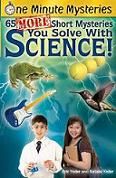 We read these a few at a time each day until we finished the book – some days, we read until my voice gave up. Everyone crowded around, and I would stop reading to see if the kids could figure out the answer of “why” before we finished the story. The stories are simple to understand, and although I’m certain my four year old didn't understand every explanation, she hung on every word right along with the older kids. They all loved to try to guess the answer to the mystery on the first page and then moved on to the next page see if they were right. My two older girls, 8 and 9, read these on their own ahead. This made the guessing a bit of a cheat – but I was glad to see that they remembered the stories and answers to the mysteries! Learning at it’s best, I’m convinced, is when they are interested and engaged and it’s not “work”. One Minute Mysteries certainly did that for my kids. We all loved it.
We read these a few at a time each day until we finished the book – some days, we read until my voice gave up. Everyone crowded around, and I would stop reading to see if the kids could figure out the answer of “why” before we finished the story. The stories are simple to understand, and although I’m certain my four year old didn't understand every explanation, she hung on every word right along with the older kids. They all loved to try to guess the answer to the mystery on the first page and then moved on to the next page see if they were right. My two older girls, 8 and 9, read these on their own ahead. This made the guessing a bit of a cheat – but I was glad to see that they remembered the stories and answers to the mysteries! Learning at it’s best, I’m convinced, is when they are interested and engaged and it’s not “work”. One Minute Mysteries certainly did that for my kids. We all loved it.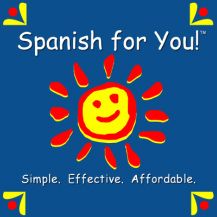 My girls weren't over their heads in the slightest without any previous Spanish instruction. They jumped in and began and did their best Spanish pronunciation in their very-English speaking voices. It was pretty fun – and funny – to listen to. The audio files are great to help with pronunciation. They learned common phrases, the song ‘Happy Birthday’ in Spanish, and colors and numbers and more.
My girls weren't over their heads in the slightest without any previous Spanish instruction. They jumped in and began and did their best Spanish pronunciation in their very-English speaking voices. It was pretty fun – and funny – to listen to. The audio files are great to help with pronunciation. They learned common phrases, the song ‘Happy Birthday’ in Spanish, and colors and numbers and more.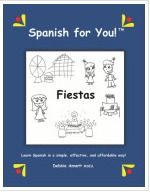 remembering with short lessons and what sounds to me like super-fast speech (It’s not – but with one college semester of Spanish under my belt, anything sounds super fast!), but after just the first lesson I heard conversations about colors and their Spanish names. Once I made a correction on the pronunciation of ‘azul’ (one dear daughter kept saying ay-zull) and sent them back to the audio files, I decided they must be learning!
remembering with short lessons and what sounds to me like super-fast speech (It’s not – but with one college semester of Spanish under my belt, anything sounds super fast!), but after just the first lesson I heard conversations about colors and their Spanish names. Once I made a correction on the pronunciation of ‘azul’ (one dear daughter kept saying ay-zull) and sent them back to the audio files, I decided they must be learning! 

